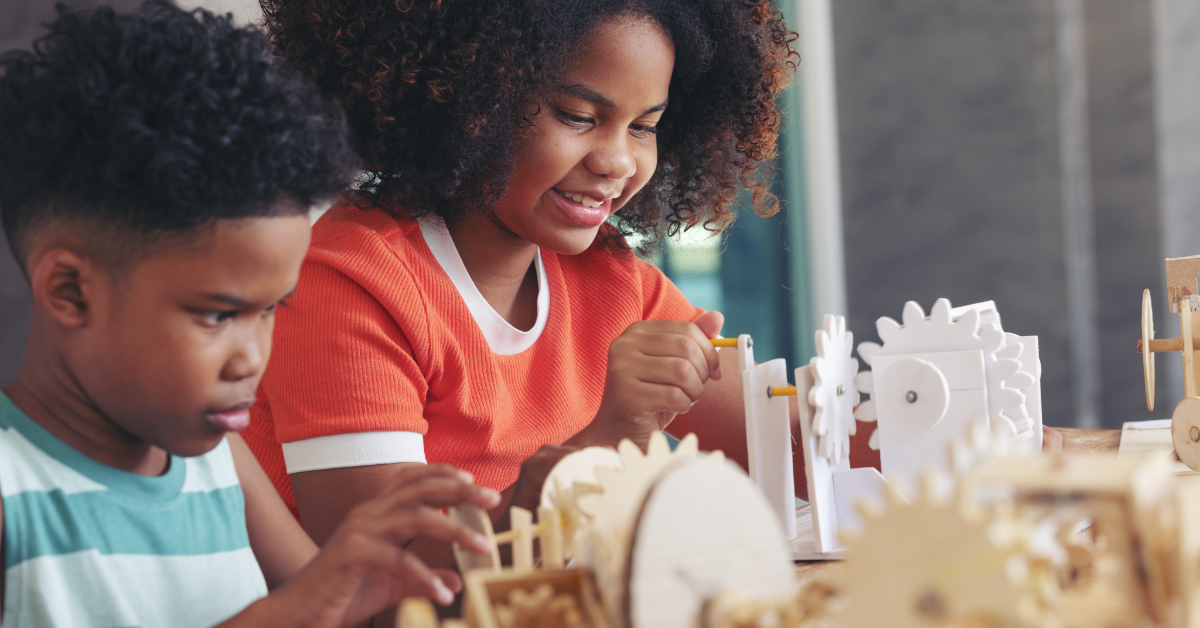
Achieving goals is rarely a linear process. Instead, we often find ourselves zigzagging in one direction after another, repeatedly narrowing in on the best solution.
This iterative process is achieved through mindfulness by becoming aware of, reflecting on, and adapting our strategies.
Mindfulness is especially important for students—and particularly homeschoolers—who often have a high degree of independence to plan and carry out their own education. The ability to reflect and adjust their progress is crucial to maintaining focus.
Mindfulness is also beneficial for students with attention or behavioral issues. They can often overcome their challenges through greater awareness of their habits and behaviors.
There are many strategies and concrete practices that students of any age can use to become more mindful of their approaches in achieving goals. Some of these include:
- Setting effective goals
- Creating reflective routines
- Monitoring progress
- Personalizing strategies
Setting Effective Goals
The first step to achieving goals is setting the right goals. It is easy to aim at something that is unattainable, vague, or not actually relevant to your interests. It’s another thing to set a goal that is realistic and achievable yet still challenging and rewarding.
Even just writing down your goal can have an impact. One historic study found that in 90% of cases, specific and challenging goals lead to higher performance than easy or vague goals.
One popular method of setting goals is to set SMART goals. These types of goals are:
- Specific
- Measurable
- Attainable
- Relevant
- Time-bound
Setting a specific goal gives you a clear picture of your target. A vague goal like “get better at math” is not very useful; a specific goal like “score a 700 on the SAT math section” is useful.
Measurable goals allow you to observe and quantify your progress. This lets you adjust your strategy along the way and clearly identify when you have succeeded.
By making a goal attainable, you avoid the frustration of futility. When your goals are attainable, each one you achieve gives you more motivation for working on the others.
A relevant goal ensures it is truly part of your broader plan. There’s nothing less rewarding than setting a specific, measurable, and attainable goal, only to find out that when you achieve it, the outcome isn’t what you wanted.
A time-bound goal provides a clear deadline for achievement. This allows you to work backward from a set point in time, empowering you to make incremental progress toward your goal and motivating you to reach it. Time-bound goals are also important to learning and practicing time-management skills.
Creating Reflective Routines
Reflection is a skill that must be practiced consistently. By reflecting repeatedly on your progress, you become more mindful of the processes of change.
Reflection enables you to zig-zag closer and closer to your goals. Without regular reflection, students can find themselves listing endlessly in the wrong direction.
To ensure the regularity of reflection, it is a good idea to set specific times for it. For example:
- A daily recall of the day’s work just before bed.
- A weekly reflection of progress every Friday.
- A monthly reflection of lessons at the beginning or end of every month.
Reflection helps students learn from their mistakes. This is a valuable skill and mindset to have, because as human beings, we will continue to make mistakes throughout our lives, and the most constructive approach is to try to learn from them.
Monitoring Progress
If you have no way of measuring and monitoring your progress, there is no way to know if you are making progress toward your goals. This, too, is a mindfulness practice, because it helps you determine if your actions are effective.
Your ability to monitor progress depends a lot on the goal you set in the first place. If you set a SMART goal, then it is already measurable.
Progress can still be hard to measure, however. It is usually easier to measure inputs than outputs, even if it the output is what you hope to achieve.
For example, suppose you set the specific and concrete goal of reading 10 pages of American Literature per day. This sort of action is very easy to monitor — you can tell exactly how much you read. Those 10 pages are your inputs.
But suppose your real goal was to understand the history you were reading. This is an output and is much more difficult to measure. It is easy to read page after page without really absorbing information properly.
The best strategy often involves measuring both inputs and outputs. For example, you could stick to your schedule of 10 pages a day and complete relevant history quizzes on a weekly basis to better assess your understanding.
In this way, you can get an accurate sense of how well your strategy is working.
Personalizing Strategies
No two people function the same. Students should assess their strengths and weaknesses and then tailor their strategies for reaching goals to their own situation.
This requires a mindful approach to creating goal-driven strategies, because it’s not easy to gain an objective sense of your own abilities. It is important to understand that abilities are not fixed, even though they might appear that way at the outset.
For example, a student may reasonably conclude that they struggle to learn new math concepts, because they are struggling with a particular problem. In this case, they should remind themselves that their weakness in math is only a current challenge (the goal), one that can be overcome with the right kind of effort (the strategy to reach the goal).
Keeping Goals in Perspective
Mindfulness helps to keep goals in perspective through continual introspection, constantly asking yourself what you are doing, why you are doing it, and how effective it is.
Like climbing a mountain, the path towards a goal may appear different over time. Halfway up the slope, the mountain does not seem quite as foreboding as it does at its foot. Likewise, achieving a goal rarely takes the shortest straight-line route. Instead, you must frequently zigzag back and forth, always looking for a better path to pursue.
For homeschoolers and students who struggle with attention and behavioral issues, this sort of mindset is invaluable, because it helps to maintain focus and keep the goal in front of them.
Interested in hearing more about this topic? Check out this episode of The Demme Learning Show, where host Gretchen Roe discusses goal-setting with guest Duncan Roe, who spent five years working toward (and ultimately achieving) his goal of hiking the Continental Divide Trail.




I was curious about how Demme Learning would advocate for the use of “mindfulness” techniques and read this blog posting. It was relieving to see that the concept wasn’t really even broached, much less advocated.
Mindfulness is rooted in Buddism as a means of self-improvement through introspection, and from all the places the word shows up now, it must be all the rage within the World’s philosophies. While healthy self-inspection is necessary and even strongly suggested within Christian circles – pastors and elders do well when they remind congregants of the coming Lord’s Supper as an opportunity for personal review and repentance and we are reminded to work out our own salvation with fear and trembling (Phil 2:12) – mindfulness in its more classic sense is a pagan exercise. Instead, Christians are informed by the Apostle Paul that they are to “pray without ceasing” (1 Thes 5:17). Mindfulness puts the onus on self to fix self’s problems and make self better. Prayer, on the other hand, turns to the Lord for help, guidance, wisdom, etc. As a Christian homeschool, we would advocate the later, prayer, rather than the former.
I certainly have no problem with setting “SMART” goals or considering how well one is doing and how one can improve. I certainly have no problem with finding ways to do things that work best for the individual student within the boundaries of what the Lord established as right and wrong. Those are really just mature approaches to life. Thankfully, they are not “mindfulness,” at least not in the classic sense.
My family and I always appreciate Demme Learning for what you all have brought to the table. Keep up the good work!